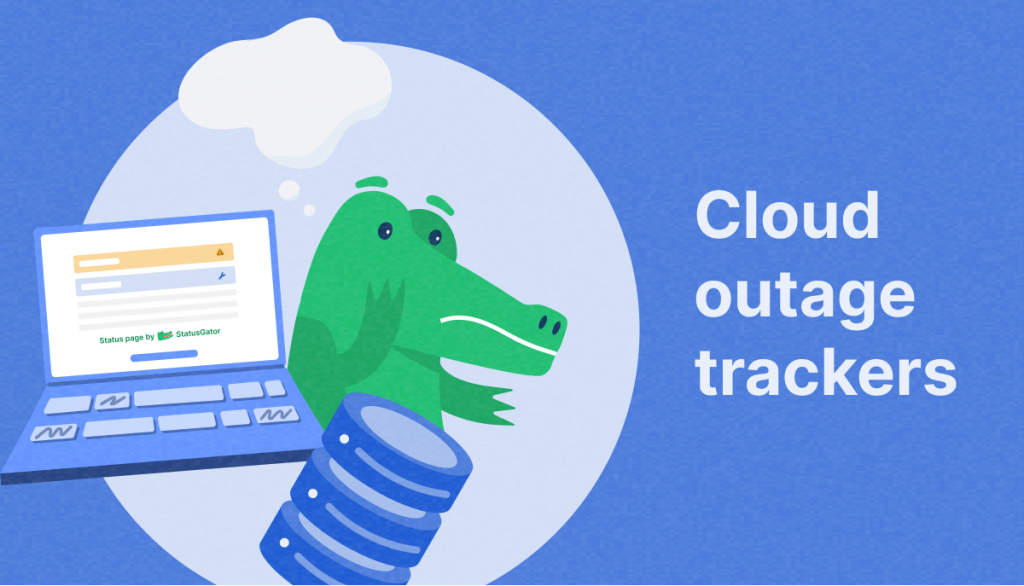
Whether you’re a business owner, a tech enthusiast, or simply a user who relies on cloud services for daily tasks, the cloud outage tracker can be a useful tool. It informs you of downtime, degraded performance, and maintenance of services that modern businesses rely on.
Here’s the list of cloud outage tracker tools that can help you prepare for and mitigate the effects of inevitable disruptions in the cloud.
1. StatusGator
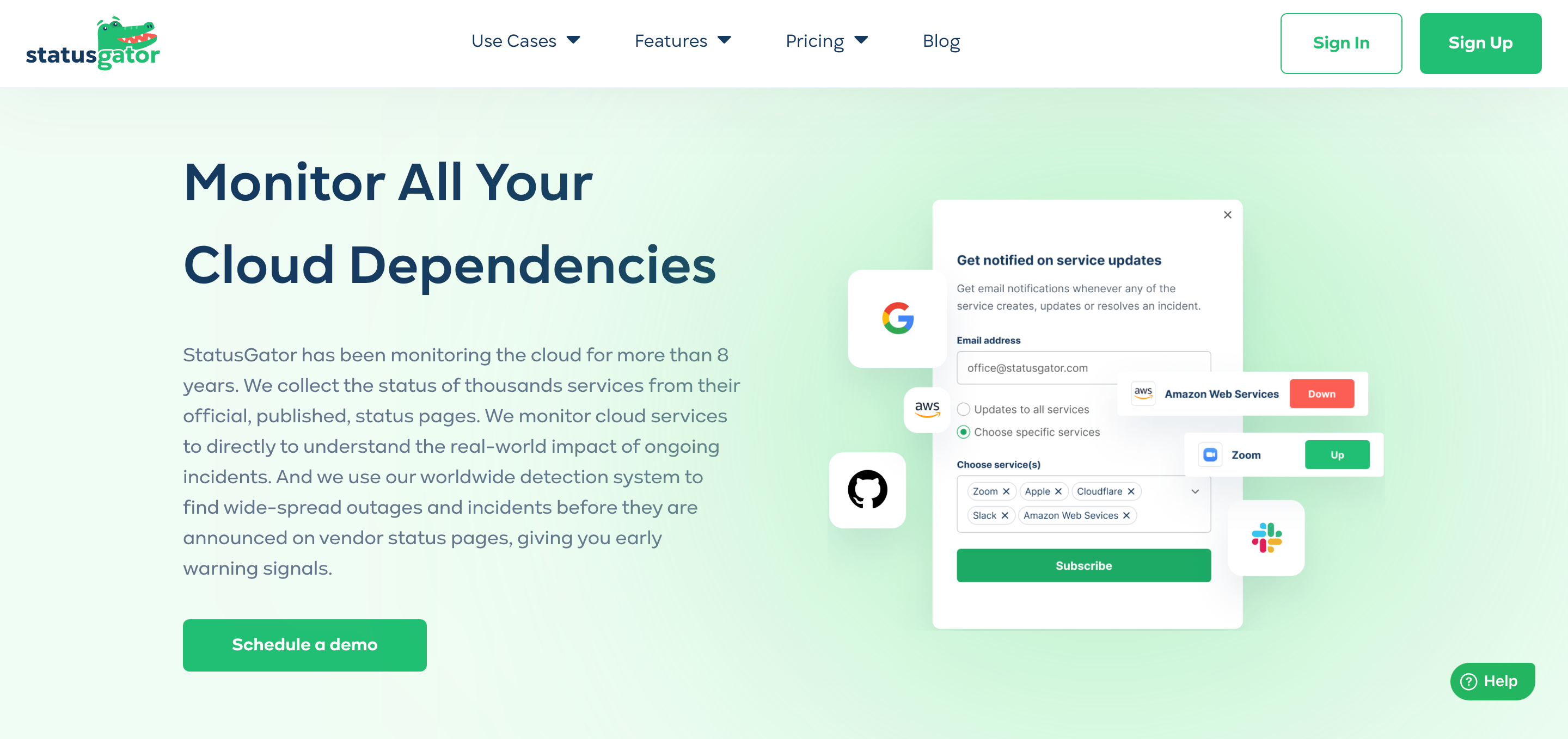
StatusGator is an advanced cloud outage tracker. We have been monitoring the cloud for more than 8 years and currently provide real-time status updates on 3,000 services.
StatusGator supports numerous status page integrations. It covers more than 250 unique status page APIs and formats. It also utilizes advanced AI to properly normalize and classify incidents based on severity – something no other cloud outage trackers offer.
To collect data, StatusGator handles the hard work of scraping or subscribing to APIs from each of the services that a business depends on. With this, it unifies all the data into a single status page, letting users see the technical data about their systems and processes simply.
StatusGator services include:
- Website monitoring
- Public, private, and audience-specific status pages
- Password-protected status pages
- Custom domains
- Custom email branding
- White-label status pages
- Unlimited notifications
- Multiple users and admin SSO
- Status page SSO
- Upcoming maintenance feed
- Historical data and reports
- Early warning signs, and more

StatusGator tracks cloud outages and aggregates real-time status data on a single status page. With a range of unique monitoring tools and customization presets it’s a useful cloud outage tracker tool to have in your arsenal.
2. Downdetector
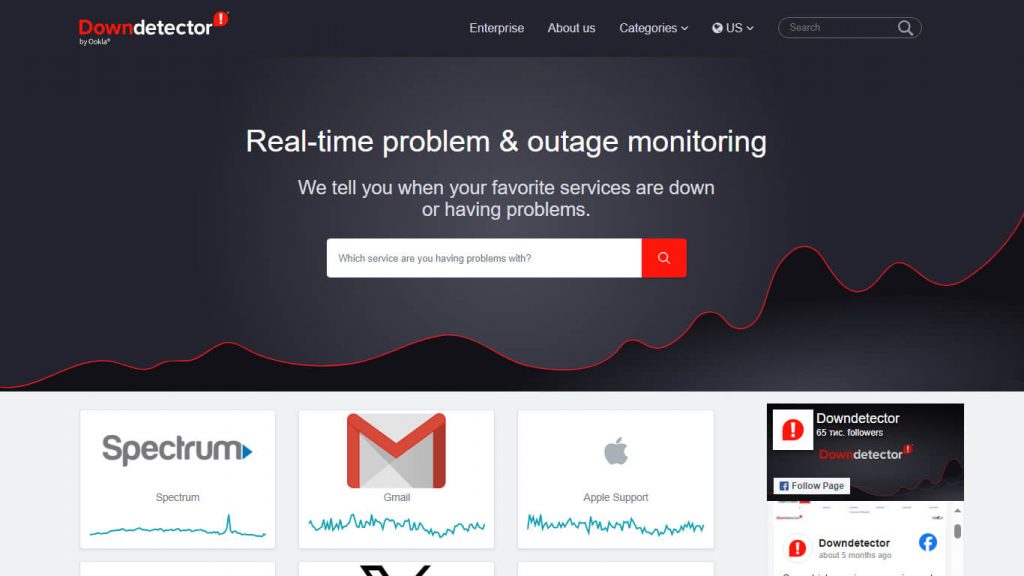
Following on from StatusGator is Downdetector, which can be considered a cloud outage tracker tool due to its array of capabilities. However, there are a couple of key things to consider when it comes to Downdetector as a cloud outage tracker tool.
Firstly, it gathers crowdsourced information from users to provide real-time status overviews. This can be a valuable resource for instant outage awareness across numerous services, as user updates can be a quicker means of finding out about any outages than official status data. So before you find out if the AWS is experiencing an outage, you might have to scroll through the reports on online games and chats.
Secondly, as a result of collating user information and reports, it doesn’t provide website monitoring. Also, it displays the past 24 hours of outage history for a service and a user discussion thread.
Downdetector has its advantages in that it monitors 25 million monthly reports, for thousands of services in over 45 countries.
Some drawbacks of this cloud outage tracker tool include the fact that updates contain minimal information regarding individual components or regional services, users do not have their personal aggregated status page, and there are limited notifications.
3. StatusTicker
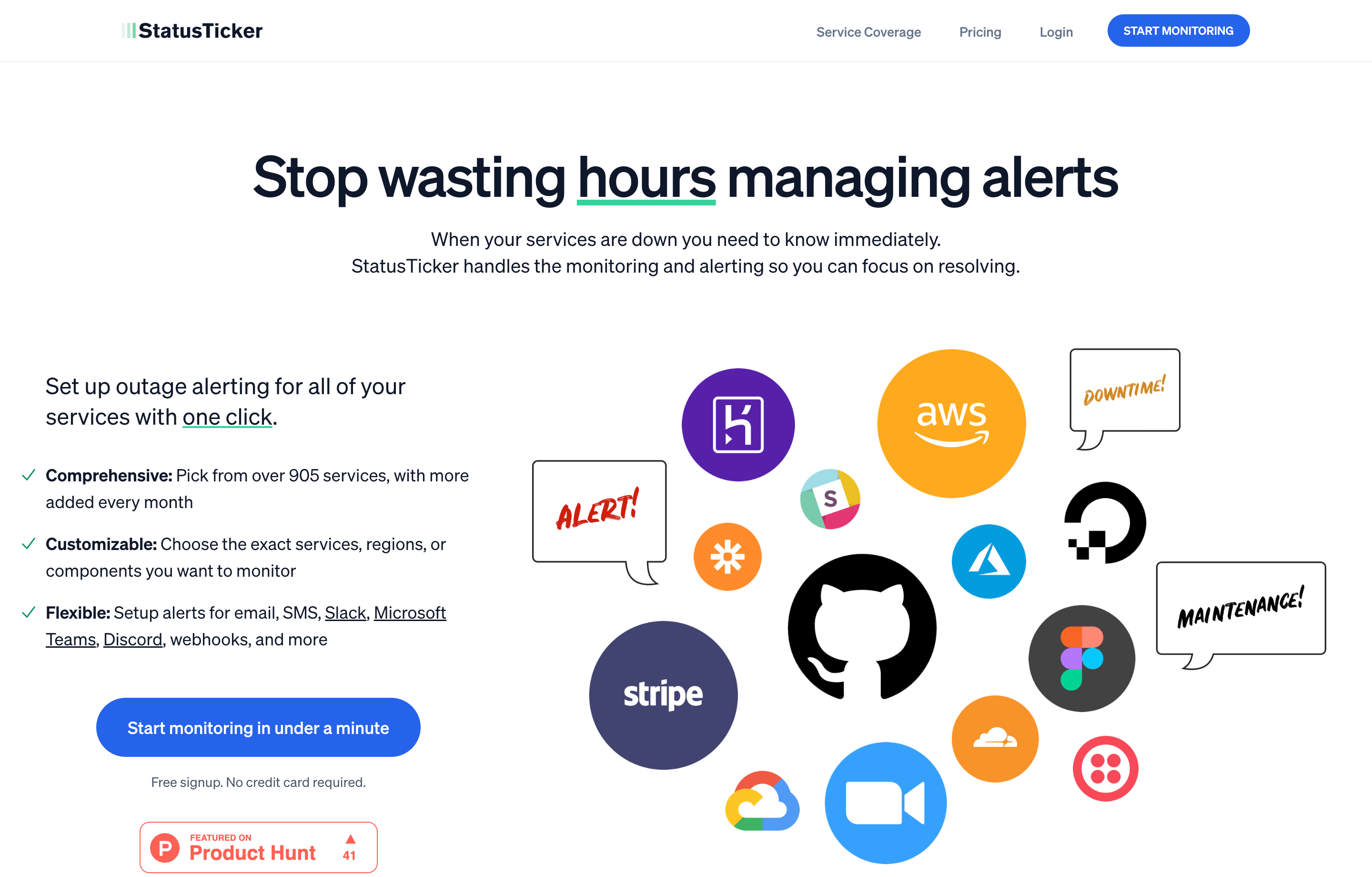
StatusTicker offers simplicity as a cloud outage tracker tool, monitoring over 645 apps and services, covering a wide range of popular social media platforms to essential business tools.
By not over-detailing reports and status updates, users can expect basic and clear information regarding cloud outages for the services they rely on. It offers quick monitoring, 45 seconds according to their site, in real-time. Also, they offer customizable notifications. It also archives historical data for user reference.
If you’re considering StatusTicker as a cloud outage tracker tool, check if your critical services are available for monitoring. Also, StatusTicker does not offer a free plan.
Overall, StatusTicker is straightforward and does not provide much detail as to outages. There is limited insight into data insights regarding outages, as well as a restricted range of services and customization features.
Additionally, there is a lack of key functionalities, such as component monitoring. It also can rely on unofficial status data.
4. CloudHarmony
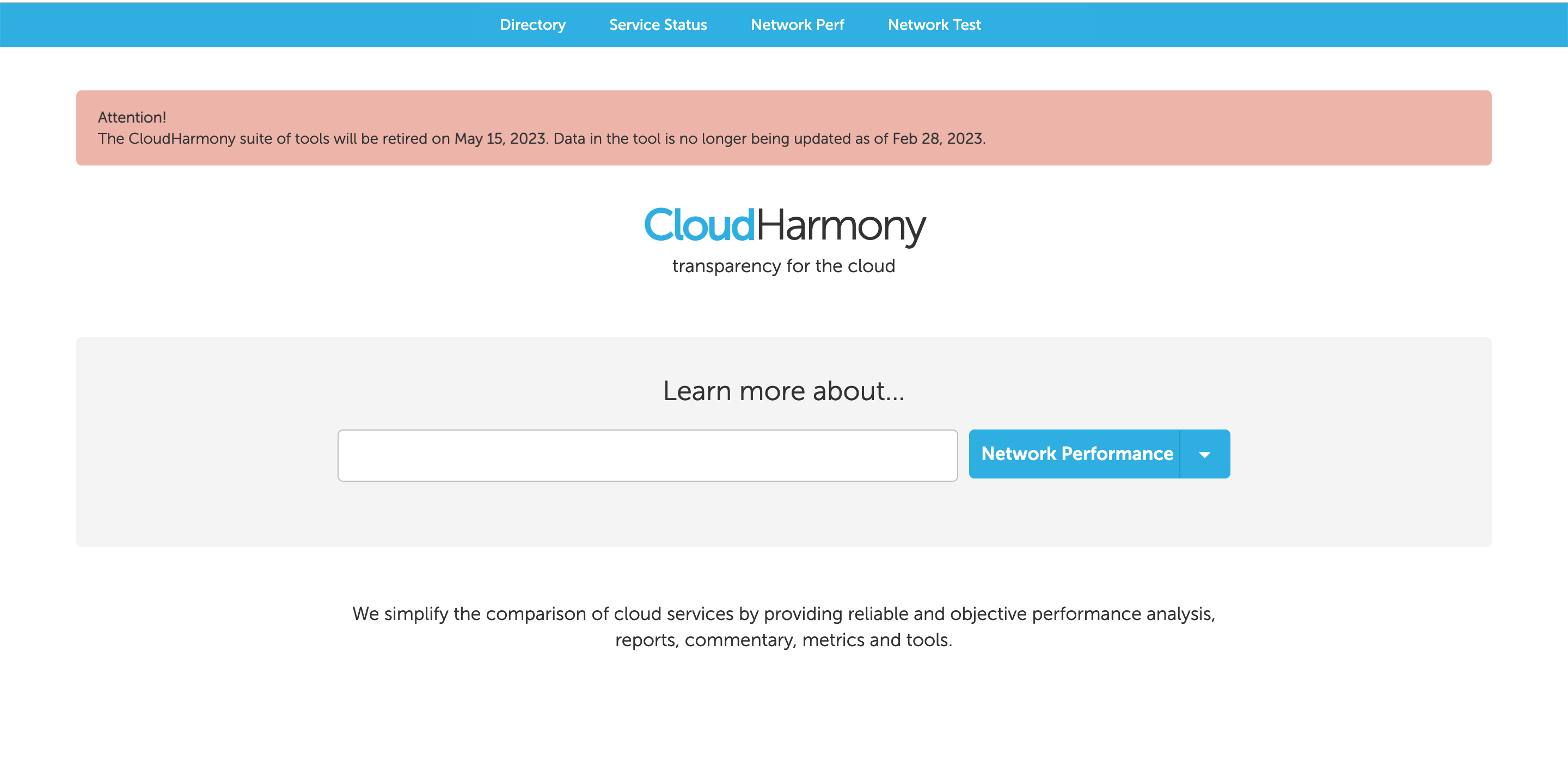
CloudHarmony helped users compare cloud services by providing performance analysis. As a result, we could consider it a cloud outage tracker tool before the service was up and running until May 15, 2023.
Since then, CloudHarmony has retired and there are not a huge number of alternatives available. The available alternatives don’t quite cover all the features CloudHarmony offered. Last year we put together a list of the best Cloud Harmony alternatives in 2023 for more detail.
Although retired, we thought it best to mention CloudHarmony in our list of cloud outage tracker tools, as not everyone is aware it has since retired.
5. Statuspage.io
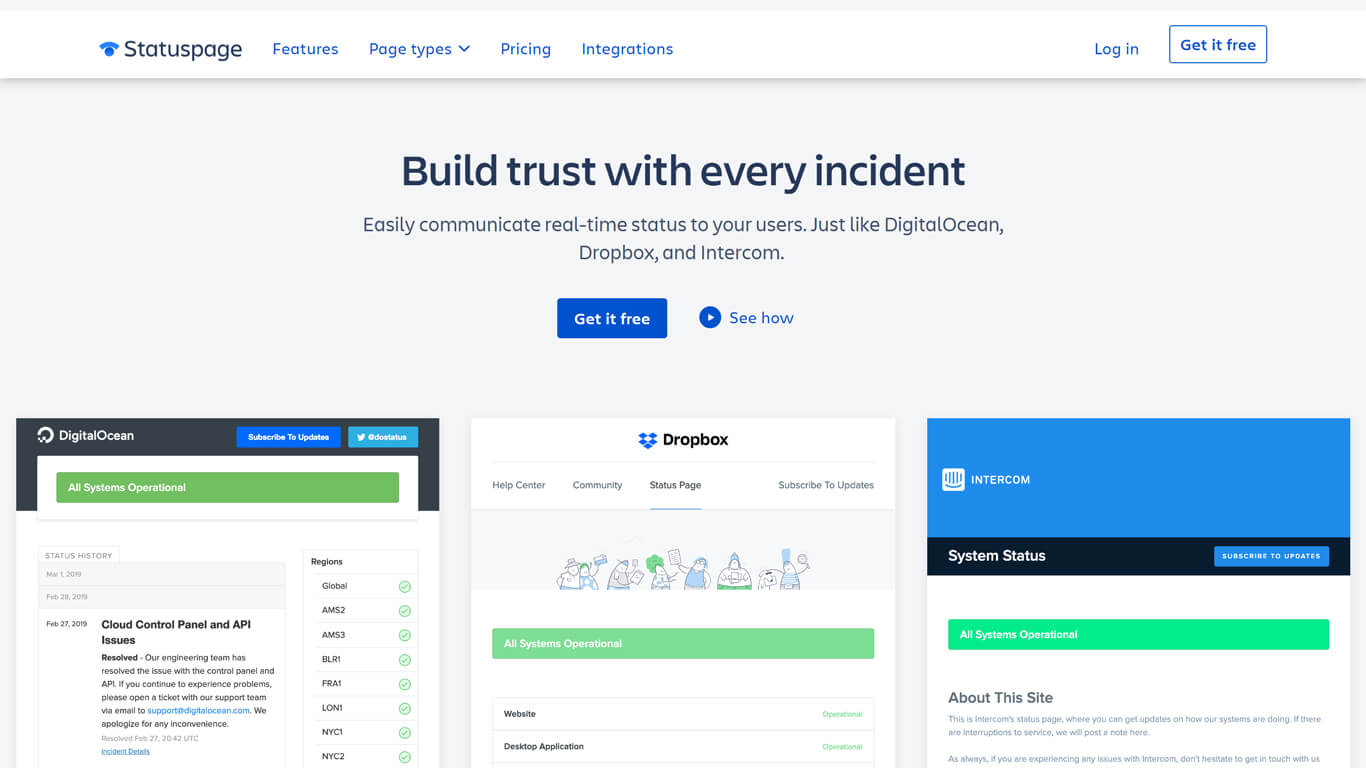
We included Statuspage.io on our list of cloud outage tracker tools as they state that they monitor third-party services. However, the service positions itself as a status communication tool first. The key thing we want to discuss is that there are a few hoops to add a third-party component. The easier way to do this is to contact the support team.
Additionally, users can integrate the status of external services directly onto their pages through third-party software. When a third-party service experiences issues, such as degraded performance, Statuspage.io automatically updates the status of that component on the user’s page to reflect these changes. For instance, if a service like Mailgun reports a slowdown in outbound delivery, the corresponding component on the user’s dependent service will also show a degraded status.
Another means of monitoring third-party services with Statuspage.io is by sending them a request. But it is an admin from the company who needs to contact Statuspage.io’s support team.
Interestingly, Statuspage mentions components of the platforms, so we are not sure about the overall status of a cloud service. That said, we have included it in our list of cloud outage tracker tools due to its ability to monitor third-party services.

FAQ
Q: What is a cloud outage tracker?
A: A cloud outage tracker is a monitoring tool or software that can warn or inform its users of any downtime or outages that a service is happening. In particular, cloud services.
Q: Is there any web service tracking cloud providers’ outages?
A: Many cloud outage trackers are web services or tools that you have to pay for. Some, such as Downdetector, are free-to-use and accessible means of gaining basic, estimated data regarding the status of a service of interest.
Q: How do I track outages of cloud services?
A: You can visit their status pages individually for information, or use a cloud outage tracker such as StatusGator to gain real-time, detailed information regarding the outage a service is experiencing.
Q: How do I know if a cloud service is down?
A: You can generally tell by not being able to use the service, but you can verify this either by looking at social media for user comments (such as Reddit) or by looking at the official status page of the cloud service.
Q: How can I track several cloud service providers at the same time?
A: To do this, you would need an aggregating tool that can simply collate status data into a single, unified status page. An example of a budget-friendly tool that can do this is StatusGator.
Q: Is there a free cloud outage tracker?A: The free cloud outage tracker is Downdetector. If you are looking for a more advanced and automated solution for your company, try StatusGator.
Recent posts



